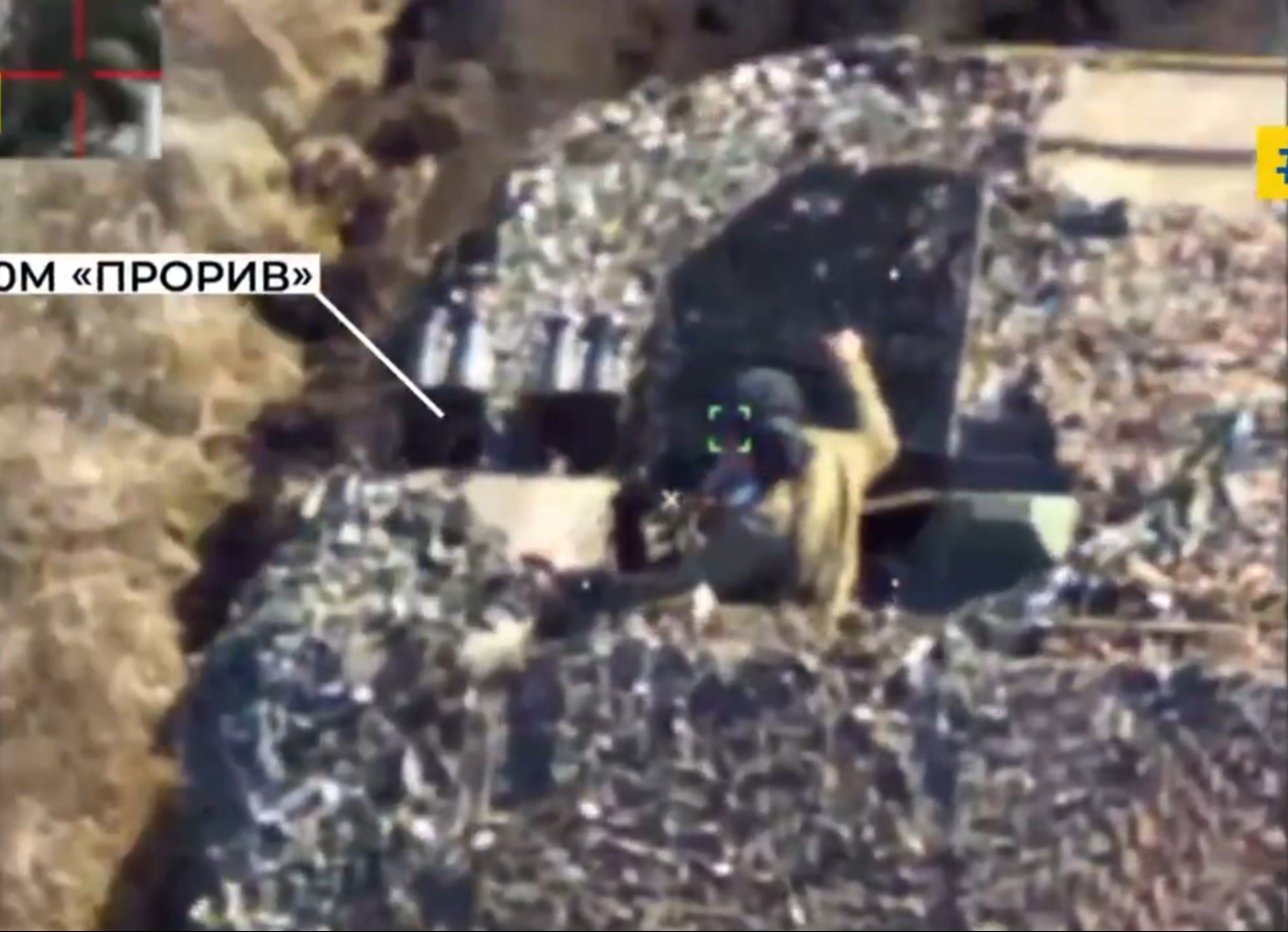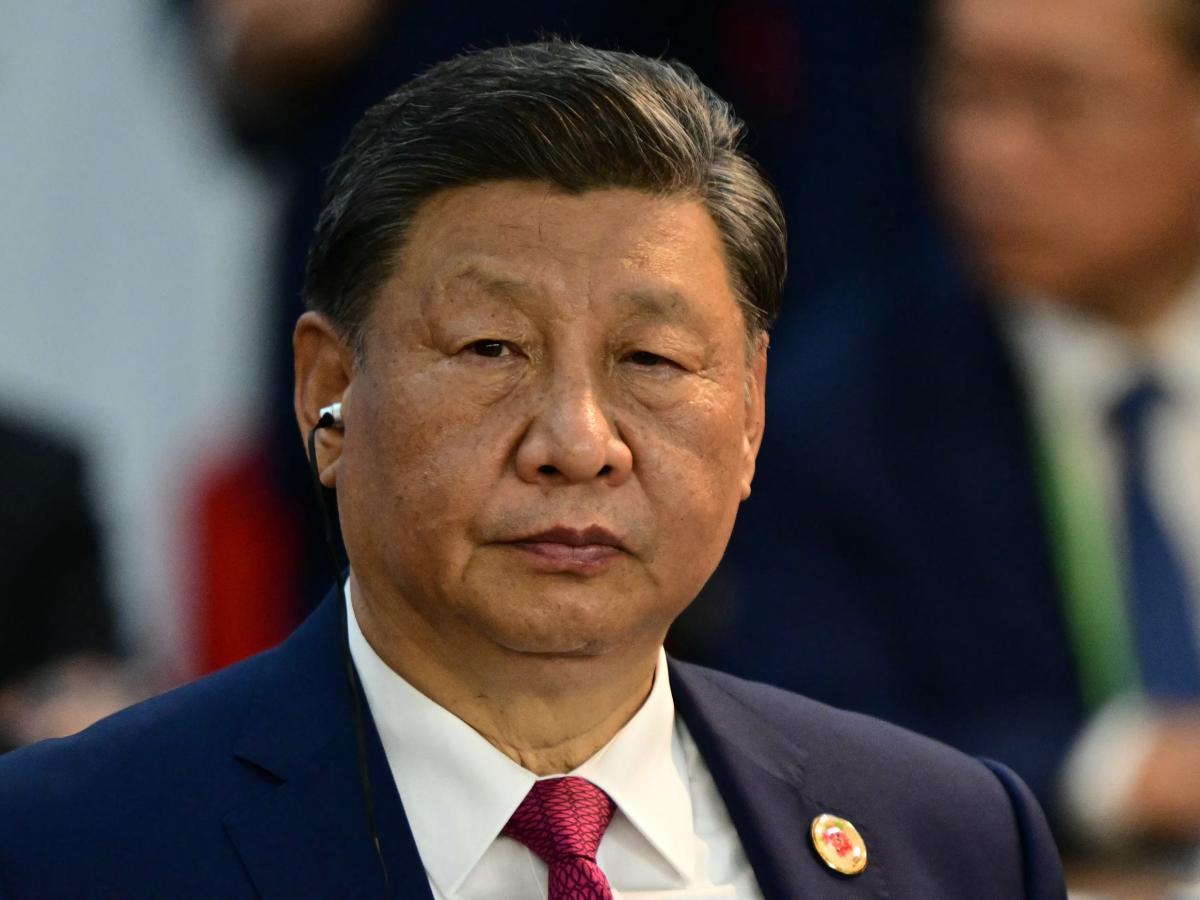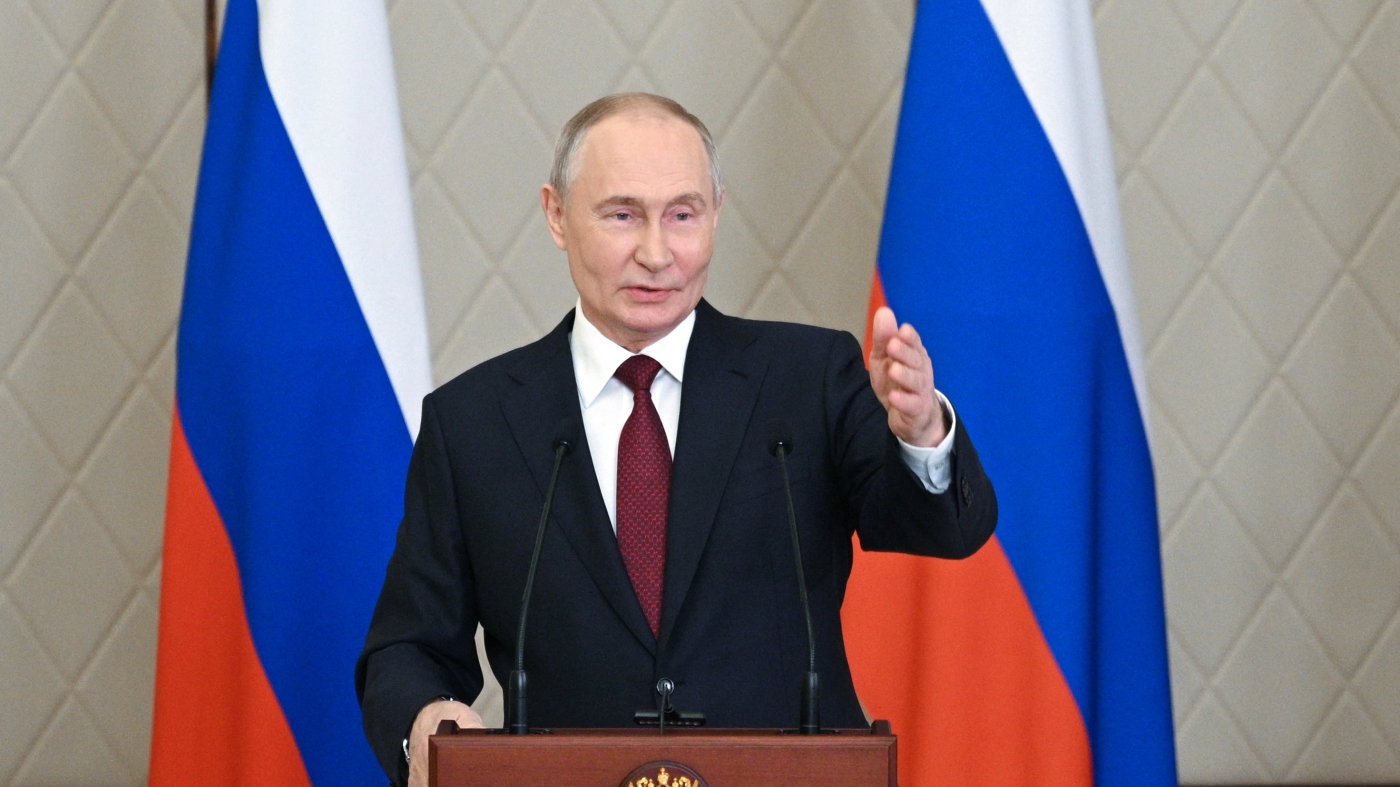THIS is the heartstopping moment a Russian tank is blown to pieces after being blasted by Ukraine’s killer Switchblade drone in Putin’s latest battlefield blow.
Dramatic footage shows the commander of the T-90M Proryv turning just seconds before the explosion that sparked a huge mushroom cloud.
Moscow has reportedly lost at least 117 T-90M tanks – dubbed “Breakthrough” – said to be one of the most advanced tanks in the world.
The latest loss came when the tank was wiped out by Ukraine’s deadly Switchblade kamikaze drone – also known as Flying Javelin.
The video shows the unaware commander positioned above the hatch, observing the surrounding area.
He appears to be turning his head and realising he is about to be struck by the drone a few seconds before a massive explosion.
The blast sparked a huge fiery mushroom cloud while thick black smoke can be seen billowing in the air.
More than 100 Russian T-90M tanks have been destroyed, damaged, or abandoned.
The sophisticated Switchblade 600 drones – nicknamed “flying shotguns” weigh 50lb and can fly 25 miles and “loiter” above a target for 40 minutes before striking them at 115mph.
The drone – which is operated by a tablet device and can be pre-programmed – have special armour-piercing warheads that can shred a tank to pieces.
The Switchblades make prime killing tools as not only they’re deadly – they don’t require a lot of training.
They can be carried in a backpack with a portable tube launcher and take as little as 10 minutes to set up.
The Switchblade 600 can abort a strike seconds before hitting a target.
Meanwhile, Ukraine’s air defences downed 36 of 89 Russian drones launched overnight, the Ukrainian military said today.
The military said on Telegram it had lost track of 48 drones, and another five had left the territory of Ukraine to Russia and Belarus.
Officials in Kyiv said a Russian drone attack on the capital left three people injured.
Falling debris from a destroyed drone damaged a non-residential building in Kyiv‘s Dniprovskyi district, mayor Vitali Klitschko said on his Telegram messaging channel.
Serhiy Popko, head of Kyiv’s military administration, said that air defence units were operating in the city after midnight.
The strikes come after Russia launched a record number of drones targeting Ukraine on Tuesday, cutting power to much of the western region of Ternopil and damaging residential buildings in the Kyiv region.
The Russian leader has issued a chilling threat to the West against American and British rockets being used by Ukraine after the Kremlin ramped up the aggression in its invasion of Ukraine.
Fresh Ukrainian air attacks saw Kyiv striking deep inside Russia using US-supplied ATACMS missiles.
This followed Kyiv launching long-range rockets for the first time on 18 November, after US President Joe Biden approved their use by Volodymyr Zelensky’s troops.
RISE OF DRONE WARFARE
By Iona Cleave
Ukraine has become increasingly reliant on first-person-view (FPV) drones — nimble, target-seeking, kamikaze unmanned aerial vehicles (UAVs).
Since early 2023, the cheap, explosive, flying machines have become one of Kyiv’s biggest success stories after its military ran perilously short on munitions due to long-stalled Western weapon shipments.
The attack UAVs have come to define the conflict, helped by constant streams of footage filmed onboard as they tail troops, blast Russian positions or smash into tanks worth millions with ruthless precision.
The potent quadcopters cost around £300, are largely made from off-the-shelf pieces of kit and as demand soars, an army of civilians are helping to assemble them in their homes.
Some are fitted with grenades or homebuilt bombs, others are used for reconnaissance missions to identify enemy positions and guide artillery fire.
Now, almost every fighting brigade in Ukraine has an assault drone company.
With the 600-mile front frozen in hellish trench warfare, the success of FPVs on the battlefield is “undeniable”, according to the commander of Ukraine’s attack drone operations.
Over two thirds of Russian tanks destroyed by Ukraine so far in 2024 have been taken out using FPV drones, a Nato official told Foreign Policy.
Their long-range capabilities also save countless lives as the drone operator can be stationed away from the frontline.
And drones are not just used on the battlefield, both Ukraine and Russia are hitting targets hundreds of miles deep into enemy territory using long-range UAVs.
They are highly cost effective means to blitz factories making weapons, military bases or energy facilities.
And yet, in a constant game of cat and mouse, both sides are developing increasingly sophisticated means of stopping drones using electronic warfare.
In response, Russia and Ukraine are racing to develop UAVs guided by AI instead of GPS that can easily be jammed.
Ukraine is counting on key allies to help in this mission and to send them more expensive, high-tech drones, but deliveries are not anywhere near the sufficient scale needed.








